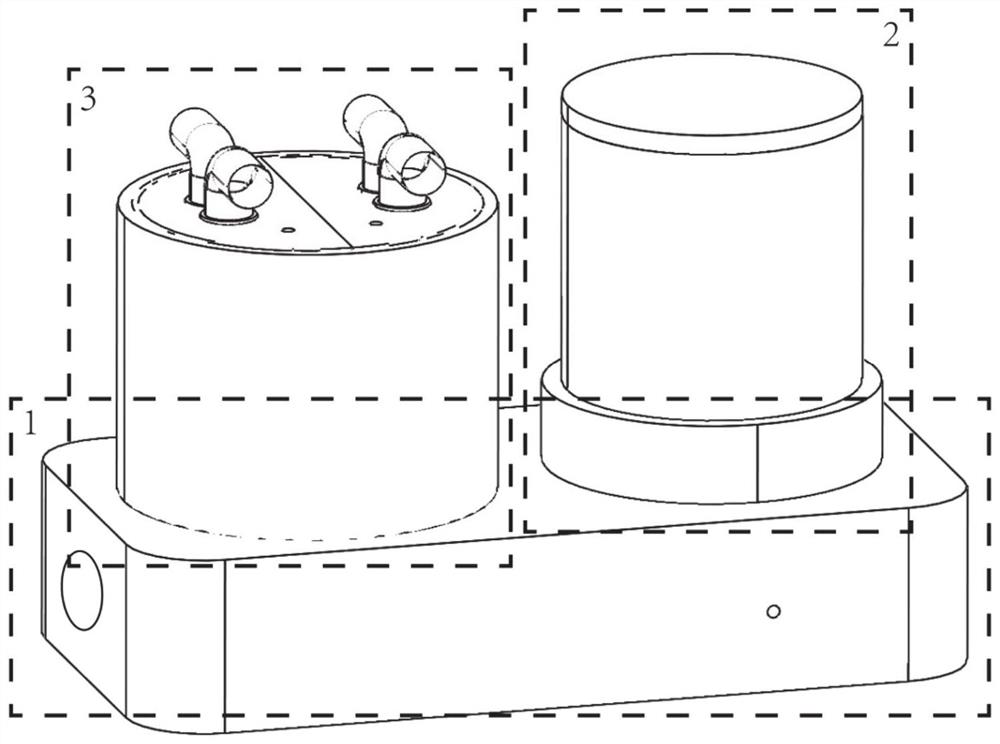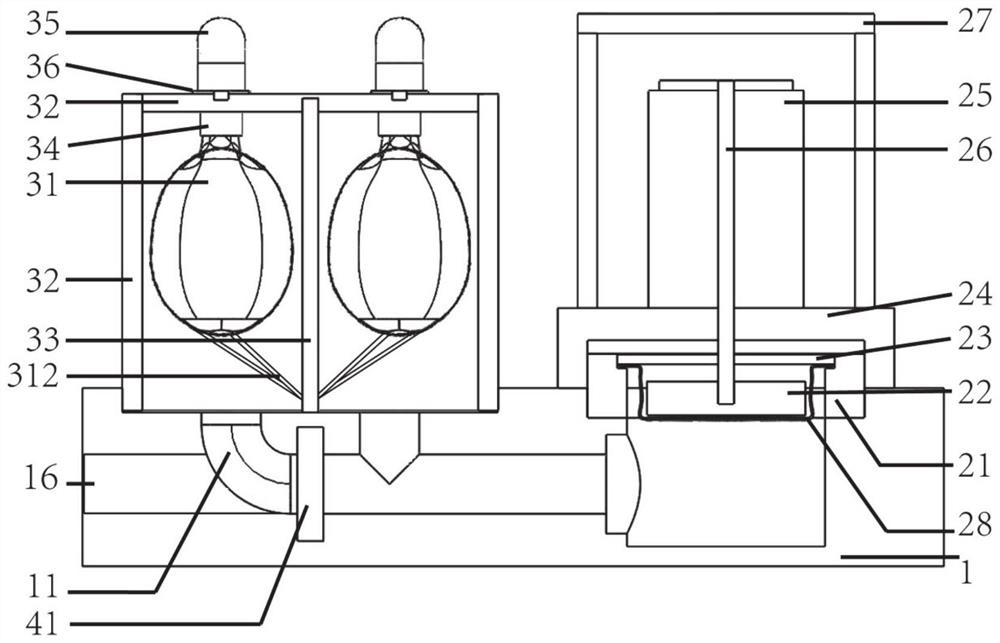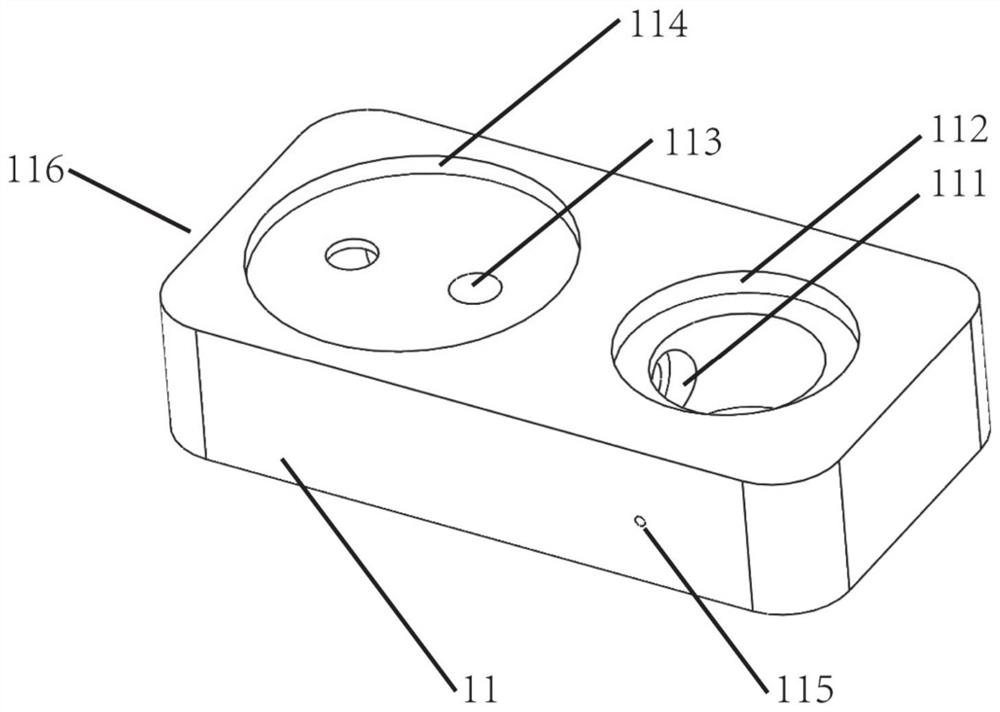Ventricular cavity simulation device and use method and application thereof
A technology of simulating device and ventricle, applied in the field of clinical medical treatment, can solve the problems of mechanical pressure curve, low platform compatibility, insufficient control ability of details of systolic motion, etc., to achieve the effect of accurate application, enhanced flexibility and effectiveness
- Summary
- Abstract
- Description
- Claims
- Application Information
AI Technical Summary
Problems solved by technology
Method used
Image
Examples
Embodiment 1
[0080] Such as Figure 1-19 As shown, this embodiment provides a ventricular chamber simulation device, including a base 1, a power unit 2, and a bionic ventricle 3. The power unit 2 and the bionic ventricle 3 are respectively assembled and then sealed and assembled on the base 1. superior.
[0081] The bionic ventricle 3 is a box structure, which is separated into independent double ventricle chambers by a partition 33; the upper part of the box body is the outer wall seal top 323 of the ventricle, and the ventricular sac 31 is connected to the outer wall seal 323 of the ventricle through the ventricular sac connecting tube 34 , the outer wall seal 323 of the ventricle is provided with an opening, and the ventricular sac connecting tube is assembled on the outer wall seal top 323 of the ventricle through the opening, and the valve clip 36 is installed in the opening, and the valve clip 36 is clamped with a valve suitable for The valve of the circulation simulation platform; ...
Embodiment 2
[0089] This embodiment provides a method for using the ventricular chamber simulation device described in Embodiment 1, specifically:
[0090] Turn on the motor to push the working fluid in the flow channel to flow to the bionic ventricle 3. Before entering the double ventricle cavity, the working fluid first passes through the electromagnetic valve 12, causing a certain flow change, pressure change and time difference. By adjusting the motor frequency and forming And the precise control of the action, squeeze the ventricular sac 31 to contract, so that another working fluid in the ventricular sac 31 can be smoothly discharged through the valve device in one direction, and flow into the circulation simulation platform pipeline 35, accurately simulating the blood pumping action of the left and right ventricles.
Embodiment 3
[0092] This embodiment provides a method for using the ventricular chamber simulation device described in Embodiment 1, specifically:
[0093] When the simulated demand is only a single-ventricle simple loop, the one-sided non-working state can also be achieved by adjusting the solenoid valve 12; the working fluid in the flow channel is pushed by the motor to evenly disperse the force and act on the outer wall of the single-ventricle sac, the ventricle The sac 31 contracts, and due to the traction of the support rod 312, a little side rotation occurs in the only set motion direction, which not only completes the simulation of the contraction of the ventricular sac 31, but also completes the simulation of a little side rotation, making the flow channel The working fluid can simulate the pulsation of the ventricle and complete the conversion from rigid force to flexible force, thereby completing the pumping of blood.
PUM
 Login to View More
Login to View More Abstract
Description
Claims
Application Information
 Login to View More
Login to View More - R&D
- Intellectual Property
- Life Sciences
- Materials
- Tech Scout
- Unparalleled Data Quality
- Higher Quality Content
- 60% Fewer Hallucinations
Browse by: Latest US Patents, China's latest patents, Technical Efficacy Thesaurus, Application Domain, Technology Topic, Popular Technical Reports.
© 2025 PatSnap. All rights reserved.Legal|Privacy policy|Modern Slavery Act Transparency Statement|Sitemap|About US| Contact US: help@patsnap.com



